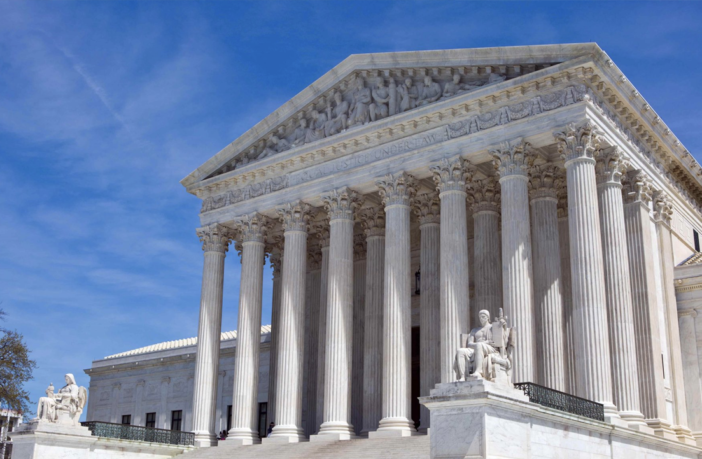Last Updated on June 13, 2023 by BVN
S. E. Williams
The old adage that reminds us even “a broken clock is right twice a day,” recently proved true even for the nation’s currently right-leaning and ultra conservative U.S. Supreme Court.
In a ruling last Thursday that surprised many of the high court’s critics, including myself, by a vote of 5-4, the “justices” ruled in favor of “justice”.
In what has been described as “a major voting rights decision” a majority of justices agreed that Alabama’s new congressional map “likely” violates Section 2 of the seminal 1865 Voting Rights Act.
Now, I’m not one to look a gift horse in the mouth but when all of Alabama’s Black folks were packed into one of the state’s seven congressional districts it was hard to see how even this court could ruled otherwise–especially when data shows that about 25.9 percent the state’s residents identify as African American or Black.
Resident Population Distribution of Alabama in 2021, by race and ethnicity*
*This graphic shows a slight decrease in the African American/Black population of Alabama from the 28.6% reflected in the 2020 Census on which the congressional maps were based. (Graphic source: statista.com 2023)
Sadly, however, I’m equally as sure the court just as easily could have found some archaic justification to rule to the contrary–fortunately in this instance, it did not.
After the court’s ruling last week, the question remaining on the table is how will this ruling impact states like Louisiana where almost a third of the state’s population identifies as African American/Black and yet, there is only one Black congressional district in the state while the remaining five are majority-white. Or, in Florida for example where the power of the Black vote has also been diluted and at least one congressional seat lost since 2020.
Section 2 of the Voting Rights Act clearly bars election practices that result in a denial or abridgement of the right to vote based on race and although it is clear the high court ruled correctly last Thursday, it does not absolve it from its blatant and abysmal failure to do the right thing before the November election last year when it blocked a lower court ruling by a three-judge panel that had reached the very same conclusion reached by the Supreme Court on Thursday–that Alabama’s congressional map “likely” violated the Voting Rights Act.
By blocking the lower court’s ruling last year, the Supreme Court intentionally opened the congressional electoral door in favor of Republicans. As a result, Republicans won six of Alabama’s seven House seats in November and gained control of the U.S. House of Representatives by the slimmest of margins.
“In a democratic society, the purpose of voting is to allow the electors to select their governors. Once a decade, however, that process is inverted, and the governors and their political agents are permitted to select their electors. Through the process of redistricting, incumbent office holders and their political agents choose what configuration of voters best suits their political agenda. The decennial redistricting battles reveal the bloodsport of politics, shorn of the claims of ideology, social purpose, or broad policy goals. Redistricting is politics pure, fraught with the capacity for self-dealing and cynical manipulation.”
– T. Alexander Aleinikoff and Samuel Issacharojf
Despite Thursday’s ruling, Chief Justice John Roberts seemed to contort himself in order to explain his decision that aligned with the lower court ruling. Rather than letting the decision stand on the merits of Section 2 of the Voting Rights Act he offered a trifecta of elaborate explanations for his ruling including that the real issue before the court was not whether the lower court had applied existing law, but instead on “Alabama’s attempt to remake our jurisprudence anew” by focusing on computer-generated maps that are created without considering race at all.” It seems like a cop out to me and also a way of leaving wiggle room so he can make an opposite choice the next time a similar issue comes before the court.
But for today, it matters not so much how he got there, we are just glad he did.
I should also note that another notable victory regarding the court’s decision in this case according to experts, is that it declined the opportunity to adopt an interpretation of the Voting Rights Act that could have made it much more difficult to challenge redistricting plans on the grounds that they weaken the collective voting power of Black people.
This is because had the court upheld the new maps it would have sanctioned Alabama’s plan that packed Black voters into a single district in a part of central Alabama known as the “Black Belt,” while at the same time dispersing Black voters in the rest of the Black Belt into several other districts precluding an opportunity to be the majority in any other district.
In the end, just as sure as we know the sun is going to rise tomorrow, we know this is not the end of the epic struggle for Blacks and other minorities to enjoy the full and fair benefit of one of America’s most fundamental rights–fair and equal access to the franchise.
Of course, this is just my opinion. I’m keeping it real.



